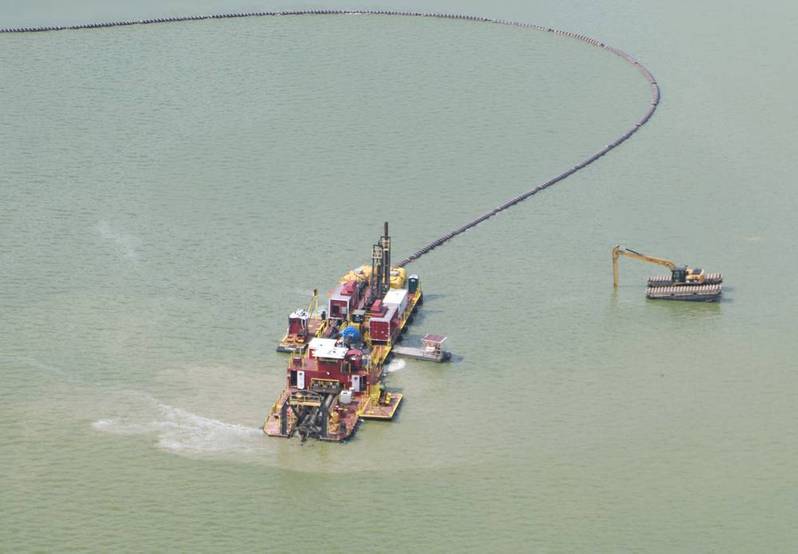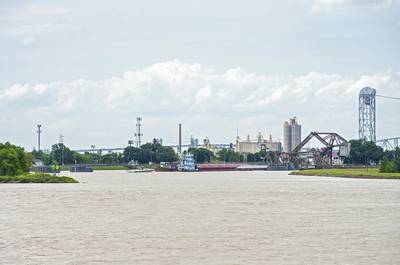Changing of the Guard
The Gulf Intracoastal Canal Association’s retiring executive director reflects on key progress made and vital work remaining.
As my tenure as President, Gulf Intracoastal Canal Association (GICA) ends after 11 years, it is gratifying look at the Gulf Intracoastal Waterway (GIWW) and reflect on its compelling relevance to our nation. Often referred to as the “Silent Giant,” as I wrote in this publication in 2014, the Giant indeed awoke and emerged as a vital waterway which delivers daily for our industry and our citizens.
Each year the GIWW consistently sees between 110-124 million tons of cargo flowing to and from Gulf state ports, refineries, plants, and terminals. While ranking third behind the Mississippi and Ohio River systems in terms of tonnage, the value of the cargoes the GIWW carries is impressive. High value petroleum, petroleum products and chemicals make up 70% of GIWW commodities and the total annual value of GIWW shipments, on the waterway which stretches from Brownsville, Texas to St. Marks Fla., is estimated at $90 billion. Those depending on these critical commodities—energy producers, manufacturers, construction trades, and of course, consumers—can thank a diverse, broad base of federal and state partners and industry stakeholders for working together daily to ensure those cargoes are transported economically and safely on our waterway.
Let’s look at that partnership. It starts with the terminals in Gulf coast ports which transfer the commodity to barges which are expertly pushed by towboat captains who routinely and safely overcome difficult navigational challenges (high water, swift current, congestion and shoaling) to deliver their cargoes. The U.S. Army Corps of Engineers (USACE) and U.S. Coast Guard (USCG) share regulatory and operational responsibility for the waterway to provide for a well-marked, navigable channel with dependable infrastructure. This means their people are constantly engaged in aids to navigation work, lock and floodgate operations, overseeing federal dredging projects, managing flood waters, and much more to keep commerce flowing. At the state and local level, each Gulf state’s transportation departments have waterway responsibilities and work cooperatively with the Federal agencies to keep their reaches of the canal viable. GICA industry members, representing nearly all sectors operating or depending upon the GIWW for their businesses, turn to GICA to work closely with those partners to represent and advocate for their needs and views.
Through the partnership we’ve seen several enhancements to the GIWW waterway system that have benefited our members, neighbors and consumers. Channels have been widened, deepened and better maintained, obsolete, dangerously narrow or low bridges have been replaced, lock and floodgate structures rehabbed and contingency plans, especially cooperative joint hurricane response and recovery plans, have been finely tuned.
 (Photo: Francisco Hamm / U.S. Army Corps of Engineers)Much, however, remains to be done to improve resilience, reliability and efficiency as several structures are not only outdated and inefficient, but are also well beyond their normal service life. Probably the highest priority on the GIWW is its oldest structure: New Orleans’ Inner Harbor Navigation Canal Lock. Built in 1921, its small, narrow chamber is a chokepoint for 12-15 million tons of commodities passing between the east and west reaches of the GIWW. Prone to breakdowns, in recent years the lock has been subject to two separate, months long, complete closures for critical repair work and machinery upgrades. These closures required our mariners to utilize an alternate open water route in the Chandeleur Sound to avoid an 11-day detour through the Mississippi, Ohio and Tennessee River systems. GICA and its local partners are working hard with the New Orleans USACE District to refine plans for building local community support for the lock’s replacement with a larger modern structure which will result in safer, more economical barge transits while easing neighborhood surface traffic challenges.
(Photo: Francisco Hamm / U.S. Army Corps of Engineers)Much, however, remains to be done to improve resilience, reliability and efficiency as several structures are not only outdated and inefficient, but are also well beyond their normal service life. Probably the highest priority on the GIWW is its oldest structure: New Orleans’ Inner Harbor Navigation Canal Lock. Built in 1921, its small, narrow chamber is a chokepoint for 12-15 million tons of commodities passing between the east and west reaches of the GIWW. Prone to breakdowns, in recent years the lock has been subject to two separate, months long, complete closures for critical repair work and machinery upgrades. These closures required our mariners to utilize an alternate open water route in the Chandeleur Sound to avoid an 11-day detour through the Mississippi, Ohio and Tennessee River systems. GICA and its local partners are working hard with the New Orleans USACE District to refine plans for building local community support for the lock’s replacement with a larger modern structure which will result in safer, more economical barge transits while easing neighborhood surface traffic challenges.
Similarly, we are advocating to revive a study for the replacement of the small Bayou Sorrel Lock on the Port Allen Alternate Route. An important link for traffic moving northward from Morgan City to the Mississippi River at Baton Rouge, its current configuration results in significant delay costs for the industry.
In Texas, we’re making good progress toward replacement of the difficult to navigate Brazos River Floodgates. After years of advocacy, meetings and studies that project has entered the USACE’s preliminary engineering and design phase and expert GIWW towboat captains are meeting at USACE’s Engineer Research and Development Center in Vicksburg, Miss. and participating in towboat simulation runs to evaluate potential gate placement solutions.
I am confident that continued success on our important waterway is assured if our cooperative partnership and a focus on the issues that affect safety, efficiency, reliability and resilience continue.
To that end, I urge our maritime industry to join me in congratulating and welcoming aboard our new President, Captain Paul Dittman, USCG (retired). Paul brings with him an outstanding background associated with several assignments to inland waterways Coast Guard units. Additionally, he worked for an inland barge and towboat company for two years before joining GICA. He’s well attuned how our partnership works, to our issues, our membership and the brown water environment in which we operate.
Last, thanks to our partners, GICA Board of Directors and our membership for the chance to work with you all. It’s been a great experience and learning opportunity. I’ll always treasure your friendships.
 GICA’s Board of Directors has selected Paul Dittman as the association’s prospective president. He will assume the GICA helm at the association’s 116th Annual Seminar in August 2021. (Photo: GICA)
GICA’s Board of Directors has selected Paul Dittman as the association’s prospective president. He will assume the GICA helm at the association’s 116th Annual Seminar in August 2021. (Photo: GICA)














